Developing characters is a skill that invites your audience to believe and connect with the story of your animation.
The character may be straightforward, but through clever use of technique, a range of expressions, personality traits, and actions can be communicated. In this section, we will introduce you to the beginning of this development process.
Before we do that, we want to give you a chance to look at the character work that has been around you for most of your life!
Let's get curious about characters
If you didn't spend your Saturday mornings curled up in front of the TV, you may have missed some of these classic animations. If you want, enjoy the optional 12-minute video or fast forward through it to your favourites. Then, scan your mind and the Internet to see if you can match the character with a catchphrase linked to that character.
Take a moment and think about these characters and the character development process for them. SpongeBob SquarePants, for example, spreads sunshine under the sea with his happy personality. What would your character development planning look like for the output to be SpongeBob? He's not known for a specific catchphrase. Can you come up with one for him?
Before we begin animating, we need to create our character. But how?
Developing character concepts

We begin with a process called the 'character concept'. This is where we choose from a variety of tools to create our characters. These tools can include:
- Mind mapping
- Character profile
- Freewriting
- Power dump
- Random list
- Add on from a basic list
Think about the character's personality and how we are going to make them feel. From here, we can flesh out the ideas of how they look (their clothes, facial expressions and mannerisms).
Make notes about the character's:
Individuality
- Flaws
- Graces
- Quirks
- Skills
- Cardinal sin (Pride, Greed, Envy, Wrath, Lust, Gluttony, Sloth)
- MBTI (Extroverted | Introverted, Sensing | Intuition, Thinking | Feeling, Judging | Perceiving)
Look
- Body
- Skin
- Hair
- Eyes
- Face
- Hands
- Unique features
- Movement
- Cultural influences
Style
- Colours
- Textures
- Tops
- Bottoms
- Accessories
You can download this editable PDF file, a character development document, to help you imagine the details that bring believability.
Appeal
We will spend a bit more time on this later, but it's essential to understand what the idea of character appeal means and how it impacts the audience's ability to believe and relate to your character, regardless of whether they like them or not.
Next, you will create character personalities and personas based on storylines.
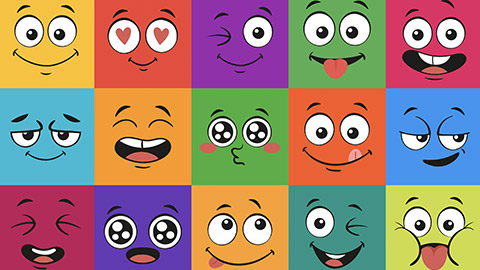
As we have said earlier, with the right technique, you can accomplish a huge range of expressions. For each square in the collage above, each one has just three elements (brows, eyes, mouth), and each looks to have a clear expression that we, as the audience, can relate to.
Novice Activity - Trace your face
🕔 About an hour
Important
If you haven't already done so, you'll need to have completed all of the tutorials in the Design Principles and Tools:
- Overview
- Elements of Design
- Principles of Design
- Composition
Also, if you haven't done the Adobe Creative Cloud suite of tools, now's the time. Please complete:
- Install Adobe Creative Cloud
- Photoshop Tutorials
- Illustrator Tutorials
Each tutorial will take a few hours at least but just how long varies depending on how confident and comfortable you are learning new digital tools.
Take your time and have fun! Then return here so we can get creating!
- Take a series of photos of yourself or someone else showing a range of facial expressions.
- Open the images in Illustrator or Photoshop to recreate the expressions
- Trace over them to get a simplified/stylised version.
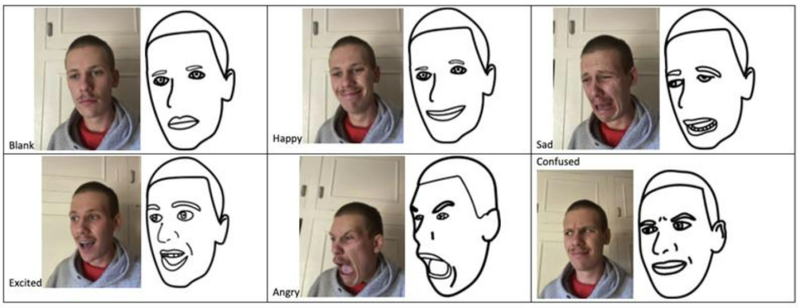
4. Now, can you expand some of those drawings? Can you turn the head? Use the reference images to assist.
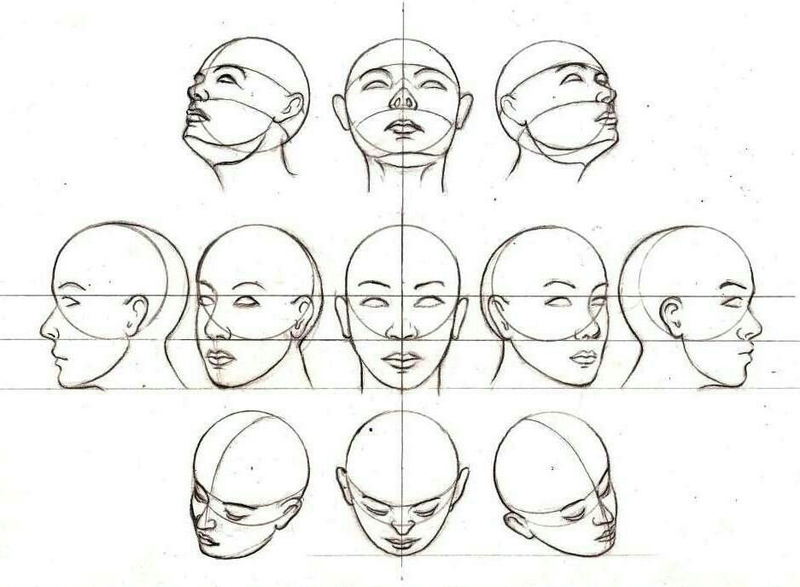 |
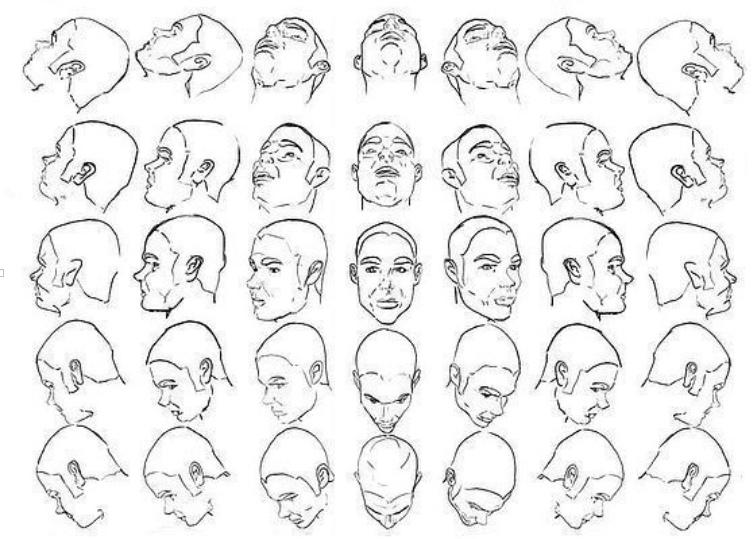 |
Keep practising! The more you practice, the better you will become. Save these designs if you like, as you can use them as starting points for more advanced activities a bit later in the programme, and you'll be uploading those for review.
Novice Activity - Create three character concepts
🕔 2 - 3 hours
Pick one of the three plotlines that follow. Create three appropriate character concepts for your chosen plotline. You'll need to complete the character development template or create a different document. We aren't asking you to draw anything yet. You are just inventing the characteristics of the character right now.
- Aqua World | TV Series
- Say It Ain't So, Sweetie | Feature film
- Kobe | PlayStation video game
1. Aqua World, TV series, 45-minute drama. Tells the story of Edo, a young boy who, in the year 2056, discovers a city that has been built below the surface of the ocean to rehome just 100,000 people of the Earth's population. As the continents shrink and fewer people survive each weather event, Edo sets out with his older brother, Voss, to appeal to the Governor General of Aqua World, Vinta Tumbo, to allow their family to relocate to the new city in the sea.
2. Say It Ain't So, Sweetie, feature film, 90 minutes, horror/comedy. Meet Veronica Turning - a vivacious, happy, 33-year-old living her best life in Wellington as a candy creator, making creative confections. Having created Happy, Hoppy, Herbert, she was horrified that he had come to life as a 3-metre tall chocolate bunny, wanting to eat the heads off of humans. Using the same accidental technique that brought Herbert to life, she creates Charlie, a chocolate/marshmallow Santa Claus, and Pete, a peanut butter and chocolate Pumpkin, to help her combat Herbert and save the day.
3. Kobe, PlayStation video game single player, Age 9+. Our titular wallaby, Kobe, lives in Twizel and has always wondered where all the other marsupials in New Zealand are and feels lonely for other animals similar to him. He longs to meet his "cousins", a huge group of six-foot-tall Red Kangaroos in the Blue Mountains of Australia. One day, he climbs into a visiting tourist's suitcase and stows away in the cargo of a plane returning to Australia. When he disembarks, he meets up with Kirra, a plucky Ibis, and Marty, an old and wise bearded dragon. The three of them decide to find the blue mountains to find Kobe's "cuzzies". Help them get to the giant kangaroos, overcoming crocodiles, snakes, spiders, and the local wallabies who stand in their way.
Save your work, as we'll return to these character concepts and build on them in an activity later in the programme.
Getting the human or animal form/shape correct is important so people can easily identify it, even if some features are exaggerated or even removed. With enough reference points, you can then play with the expectations to create unique characters.

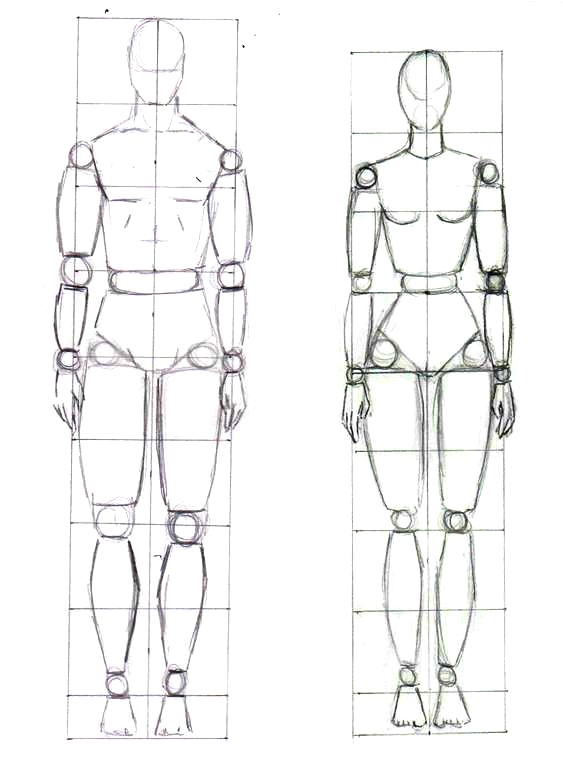
Use basic shapes as a starting point to build the characters from.
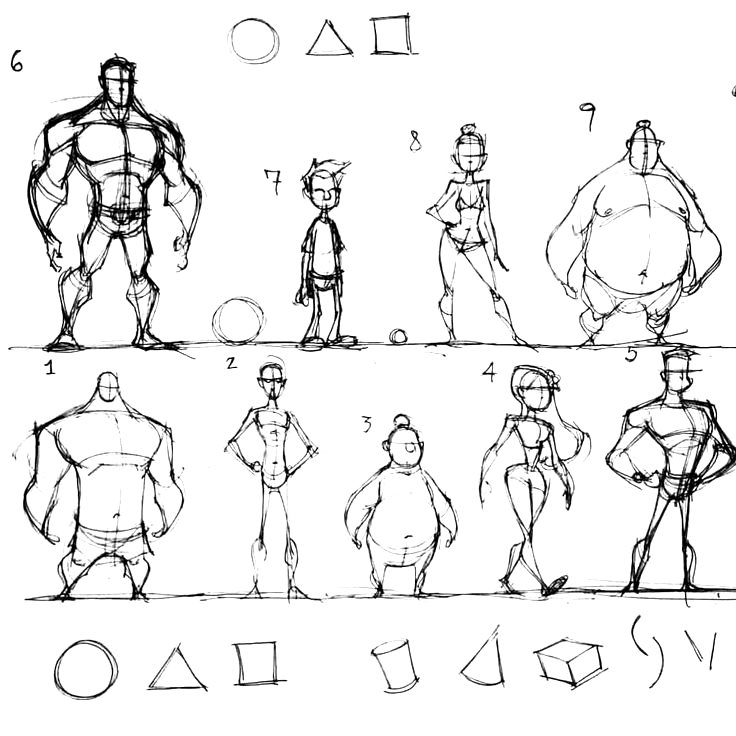
The target audience can be confusing.
The idea is more often used in promoting products and television shows than learning how to create characters, but it's still crucial for you to understand. At this stage, all you need to know is what the term target audience means and how it is used in the creative arts.
Anyone might find your character appealing, but when there is a specific audience for your design, then you need a clear understanding of who they are and what they expect.
In order to provide for them, you'll need to define them.
The 'target audience' can be summarised with a list of characteristics that your perceived audience will have. This could be defined by age, gender, interest, skills, career, location, etc.
They are the people who will pay money for your product, and understanding what appeals to them can help ensure your design meets certain expectations.
If a studio spends millions of dollars on a movie or game, you can bet they know how to create a marketing campaign that targets specific groups of people to buy tickets. They will usually know who the audience is, so they can design characters with traits that specific people can relate to and connect with. Do you think they anticipated the backlash they received about Jar Jar Binks? It seems something went wrong with their research, and they miscalculated their character's appeal.
Case Study: Star Wars
According to this video, identifying your target audience is:
how you are going to reach the people that will be most interested in your film.
Watch Jason Brubaker describe this concept and how important it is to the sales and marketing efforts of films. He uses Star Wars as an example.
To help bring home this concept, we can look to the animated series Rebels, part of the Star Wars universe.
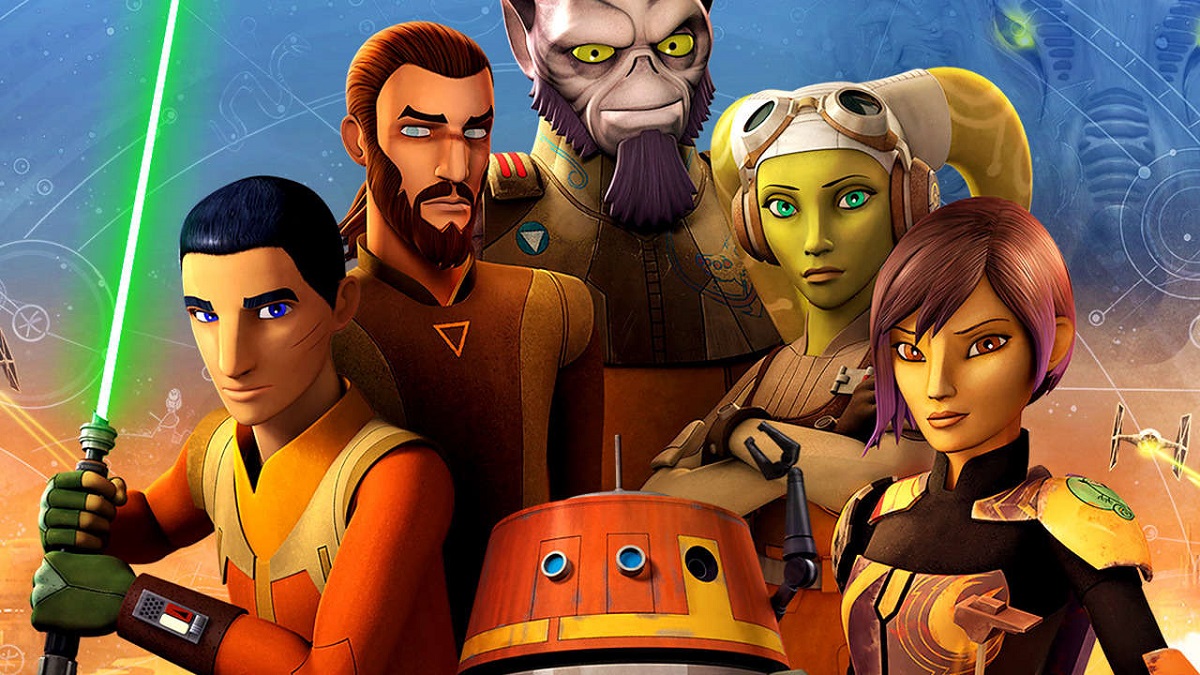
Source: Disney XD
The age for the target audience for this series was 7+; however, it found its audience of adults enjoying the show, too. Think of the concentric circles discussed in the previous video. Lucasfilm Animation created a show with characters and action that was appropriate for young children, but the people they actually reached spanned many ages because, while they didn't get those adults with age, they would have grabbed them by interest. Adults who watched this show are likely fans of the Star Wars universe or perhaps science fiction animation, and if not that, then perhaps one of the voice actors, and if not that, etc.
We used film as an example, but the concept applies to all creative work and is especially important if you are hired to do bespoke creative work.
Who is your target audience?
When identifying the target audience of your work, there are two important ideas to consider:
- ‘Everybody’ is not the definition of a target audience.
- Fellow animators/filmmakers/designers are not your target audience. They do not bring you the profits.
Why? When distributors, investors or producers hear words to describe a design as ‘universal’, ‘loved by all’, or ‘one for all ages’, they will most likely stay away from putting forth any deal, let alone a good one.
If you are excited about this topic and want to discover more, the next step is to create personas of target audience members. Read about that process in this article, Creating a Persona—a step-by-step guide with tips and examples.
The earlier you define your target audience, the more time you will have for considering their needs in the design phase and then setting up, developing, and implementing a successful marketing campaign.
Have some fun with these concepts. See if you can guess what we thought the target audience for these creative works might be.
Practising Activity - Sketch a character
🕔 1 - 2 hours — feel free to work longer if you are having fun!
Revisit the character concepts, and now pick one of those characters and sketch it out. You can use crafting tools (pen, paper, charcoal, pencil...), or a digital tool of your choice. Now, use the target audience information on the back of the cards in the activity above to define your audience and design with their needs in mind.
Forum Post
Post your final sketch in the correct Forum. When you post, include your reflections on this activity.
- Would you do more if you had more time?
- Did you find it challenging?
- Do you feel confident you understand the meaning and usefulness of identifying target audiences? If not, how do you plan to find out more?